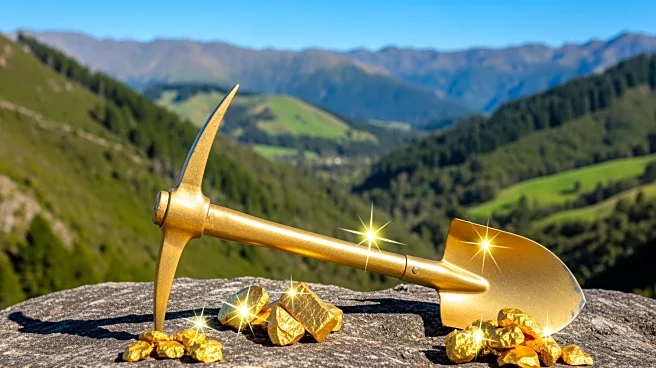What's Happening?
Santana Minerals has signed a binding agreement to purchase key blocks of Bendigo Station in New Zealand for $55 million, marking a significant step towards transitioning from exploration to full-scale
gold mining development. The acquisition covers approximately 800 hectares, or 10% of the historic station, intended for modern open-pit mining. The proposal, part of a controversial $5 billion gold mining project near Tarras, is subject to approval by the Overseas Investment Office and the Fast Track Approvals Act process. Despite local opposition, Bendigo Station owner John Perriam supports the sale, citing potential economic benefits similar to those brought by the Clyde Dam.
Why It's Important?
The acquisition by Santana Minerals is pivotal for advancing the gold mining project, which promises substantial economic benefits for the region, estimated at $5 billion. The development could create jobs and stimulate economic growth in Central Otago, New Zealand. However, the project faces significant opposition from local communities concerned about environmental impacts and the preservation of the region's natural landscape. The decision to proceed with the sale reflects a broader debate on balancing economic development with environmental conservation and community interests.
What's Next?
Santana Minerals must secure approval from the Overseas Investment Office and navigate the Fast Track Approvals Act process to proceed with the mining project. The company has yet to lodge a referral application, indicating ongoing preparations and assessments. Local opposition, led by groups like Sustainable Tarras, may continue to challenge the project, potentially influencing regulatory decisions and public opinion. The outcome of these approvals will determine the project's future and its impact on the region.
Beyond the Headlines
The gold mining project raises ethical and environmental concerns, highlighting the tension between economic development and conservation. The decision to sell land for mining purposes may set a precedent for future resource extraction projects in New Zealand, influencing policy and public discourse on sustainable development. The project's progression could also impact cultural heritage and community dynamics, as stakeholders navigate the complexities of modern mining practices.












